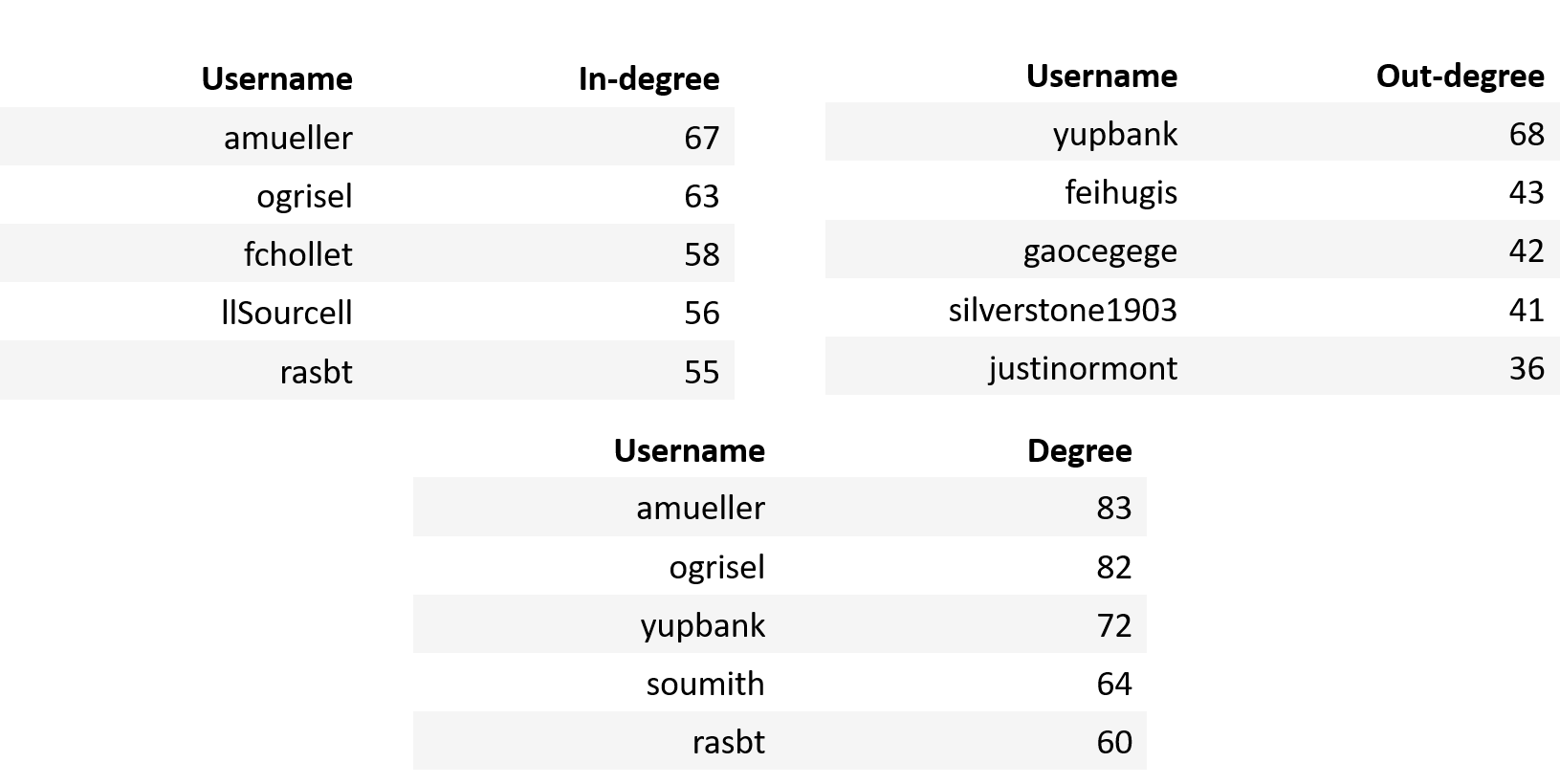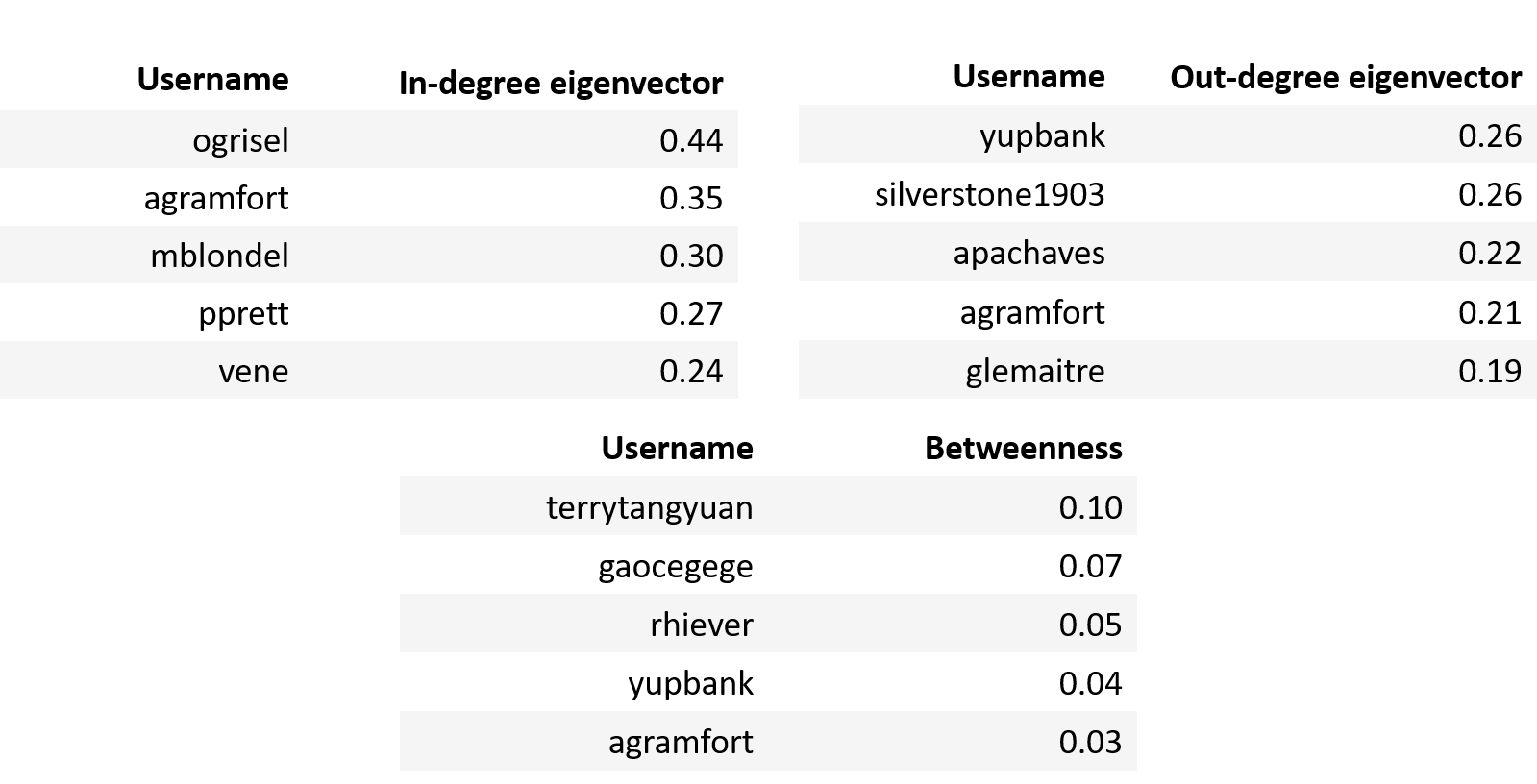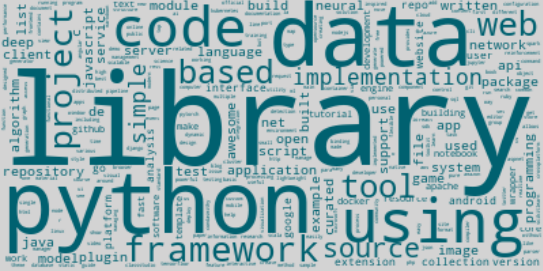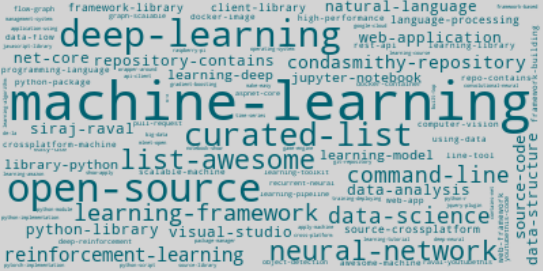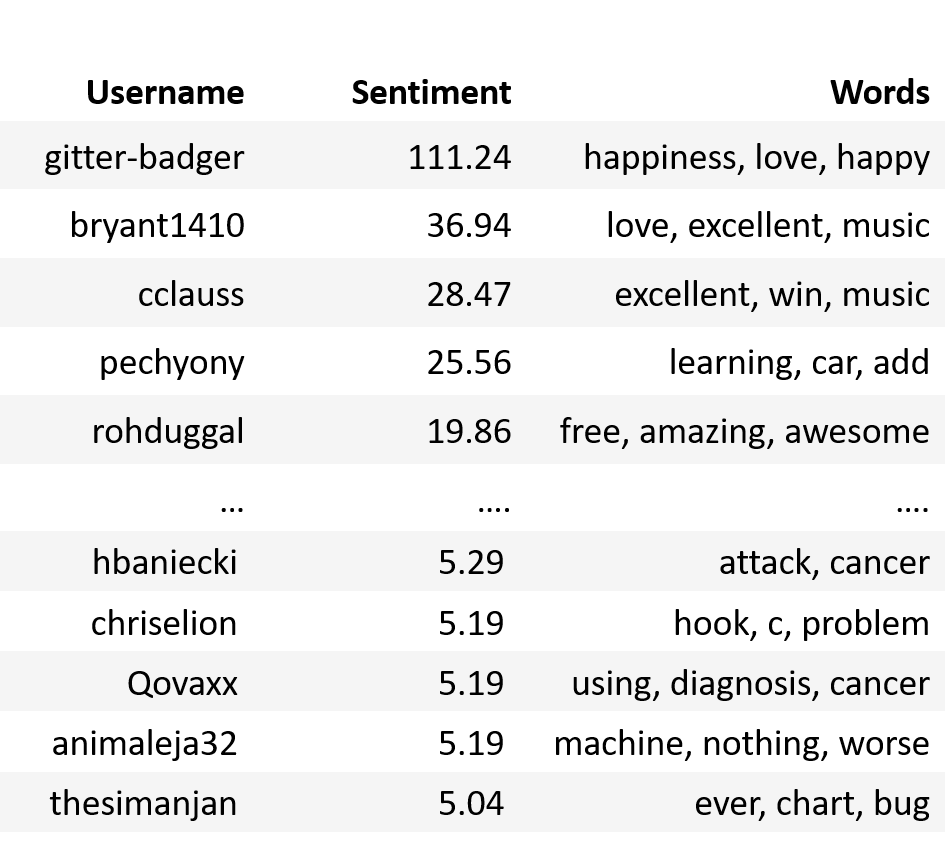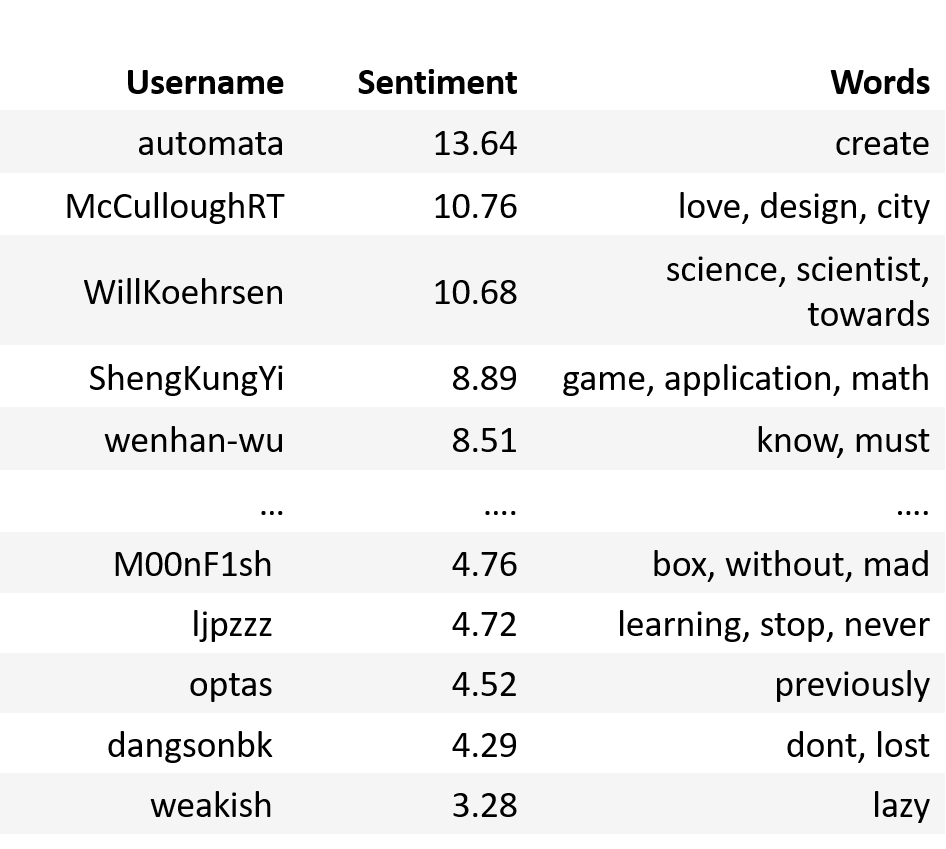Degree Distribution
IN degree
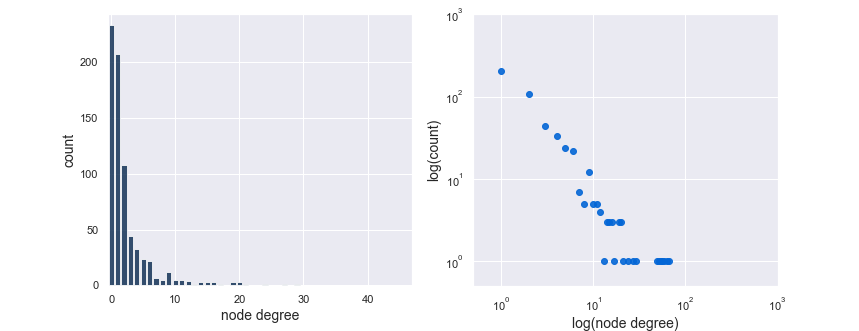
OUT degree
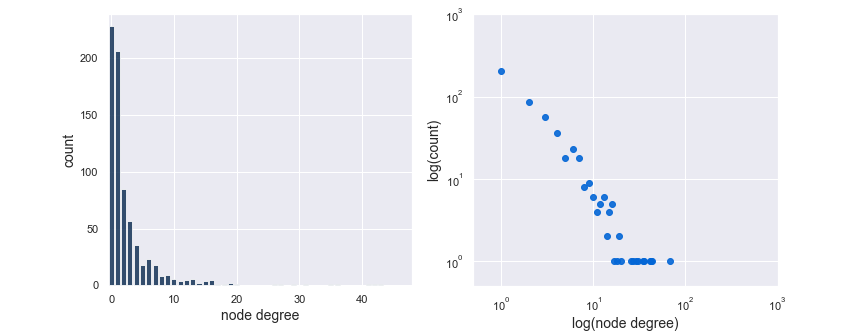
Both the in- and out-degree distributions are asymmetric as they are right
skewed with long tails. Although most users have zero or small degrees, there
are a few users with a large degree as well. This indicates the presence of a few
users that are highly connected to other users in the network.
These highly connected hubs of users can be seen as responsible for
keeping the network connected. So a removal of one of the key users would
have a huge impact on the network stucture. Since the hubs of key users
are highly connected, they collect information about other key users fast,
but they also spread information quickly to other users.
The log-log plots of the distributions demonstrate that the network follows
the power-law degree distribution meaning that this network is scale-free.
This is a typical property of real world networks.
